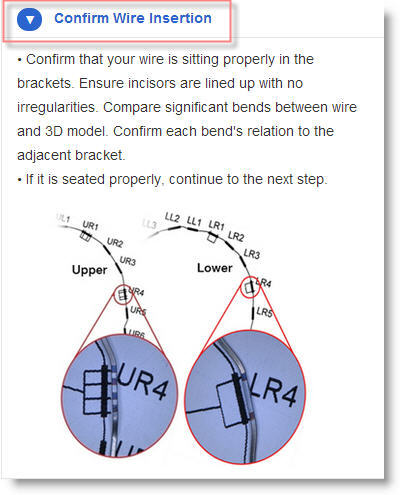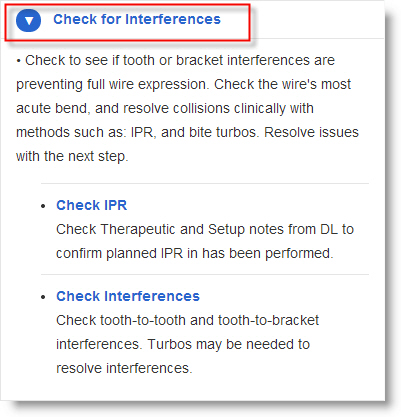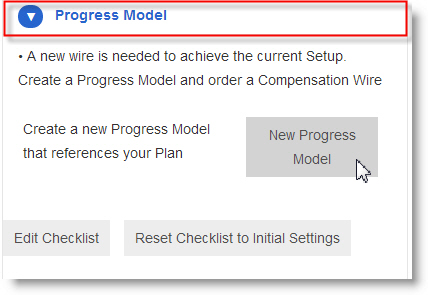Evaluating an Installed Wire/Modifying an Archwire Prescription
Occasionally you will find during patient progress check appointment that a wire prescription is not achieving the desired treatment outcome.
When this is the case, use SureSmile's progress evaluation checklist to methodically analyze the problem and decide what to do .
It is a checklist of 4 or 5 evaluation steps (5 steps if the wire is not a full expression [100%] wire see Order an Archwire with a Staged Prescription for more information) that is displayed in the wire design workspace when you open a finished wire. It is intended to help you step through a checklist of typical issues and take action as you proceed to resolve the problem.
As you will not always need to go through every step for each progress evaluation; the guide is designed to allow you to proceed with the appropriate method and make the appropriate correction as soon as the problem is identified, without having to go through the remaining steps.
The SureSmile default setting is to display the Progress checklist automatically each time a finished wire is opened.
To diagnose wire issues during the patient exam
- At chairside, open the wire order that corresponds to the inserted
wire.
If the progress evaluation checklist is not already open, click the checklist icon .
.
Click the Checklist button to display the checklist. To step back and forth through the checklist, use the small arrows on each side of the checklist button, or just click one of the steps in the list to open it. Each step in the checklist includes instructions and options you can choose as described in the following sections.
Confirm that the currently inserted wire is a full expression wire.
This step appears only if the currently opened wire is not a 100% wire. If a full expression wire already has been ordered, the checklist will show four steps instead of five.
Confirm that inserted wire has all 100% bends. If you have not ordered a 100% wire, order it now.
See also...
Confirm Wire Insertion.
Examine the patient and confirm that your wire is sitting properly in the brackets. See the help topic Archwire Insertion Essentials for more information. If the archwire is seated properly, continue to the next step.

Confirm Setup Achieved.
Examine wire and tooth positions to determine that a setup has been achieved.
- If the Setup has not been achieved, proceed to the Check for Interferences step.
- If the Setup has been achieved but the case is not complete, there are two options:
- Option 1: New Treatment Simulation – Create a new treatment simulation starting from your setup and then order a new wire based on the simulation. This is the recommended option for all new SureSmile users as it gives a visual representation that helps users determine the amount of correction. See detailed steps in the help topic Create New Treatment Simulation and Order Wire.
OR
- Option 2: New Wire – Create a new wire based on the one in use and modify it to meet your new treatment goals. See detailed steps in the topic, "Create a copy of the current Wire and Make Adjustments."

Check for Interferences
Check to see if the tooth or bracket interferences are preventing full wire expression. Check the most acute bend of the wire, and resolve collisions clinically with methods such as IPR and bite turbos.
- Check Upper IPR – Check therapeutic and setup notes for Digital Lab to confirm that planned IPR has been performed.
- Check Lower IPR – Check therapeutic and setup notes for Digital Lab to confirm that planned IPR has been performed.
- Check Interferences – Check tooth-to-tooth and tooth-to-bracket interferences. Turbos may be needed to resolve interferences.

Create Progress Model
If you determine a new wire is needed to achieve the current setup, use a progress model to design a new wire with overcompensations to achieve the setup. See detailed steps in the topic, Ordering a Compensation Wire from a Progress Model.
